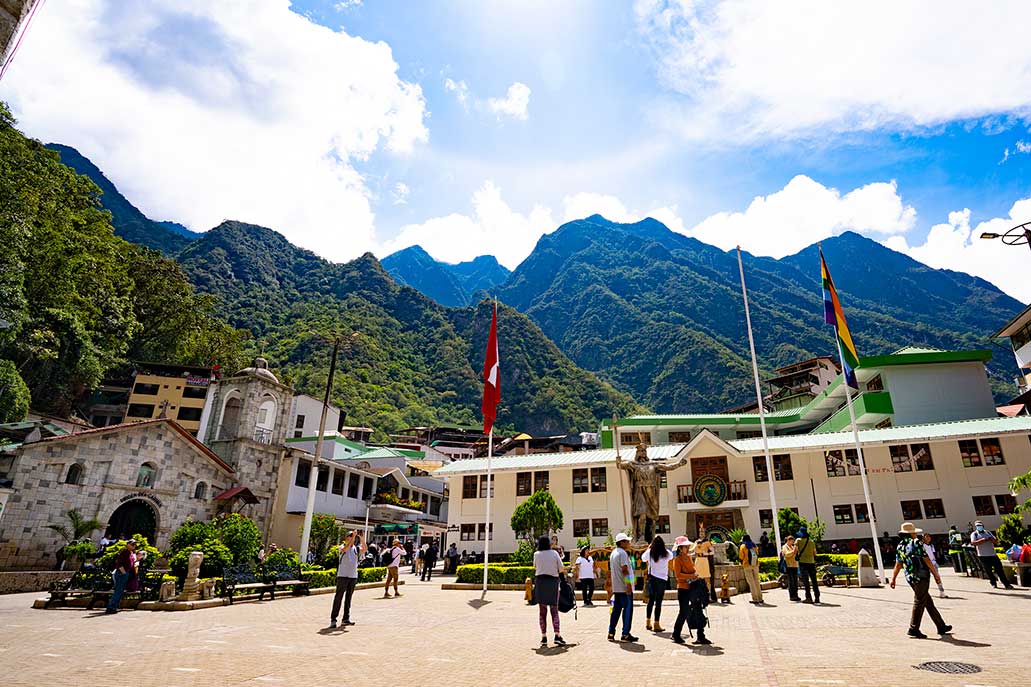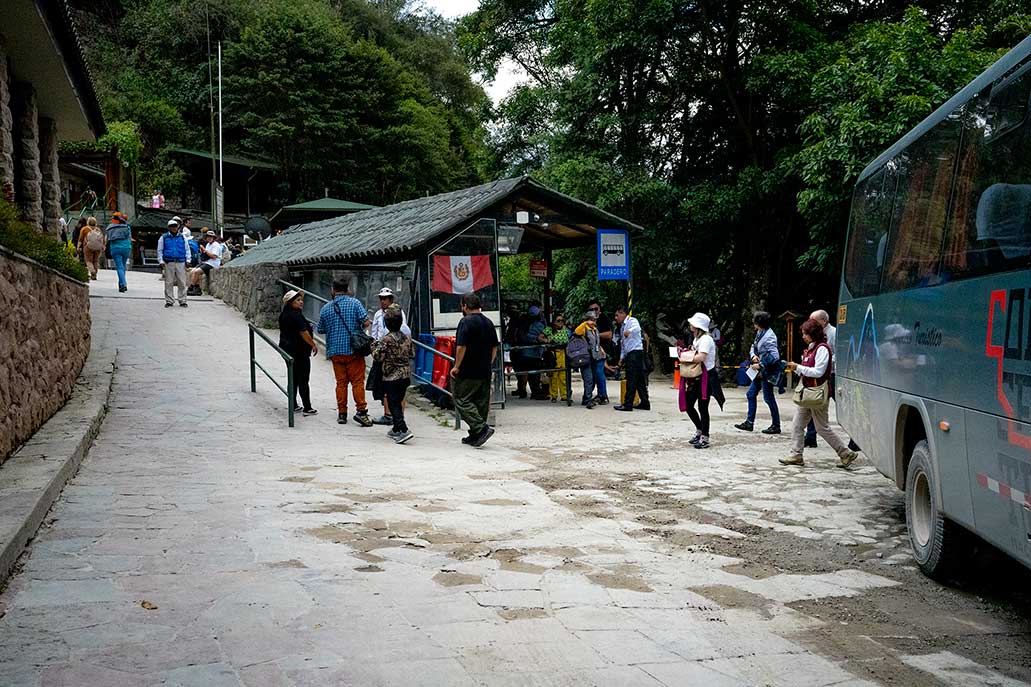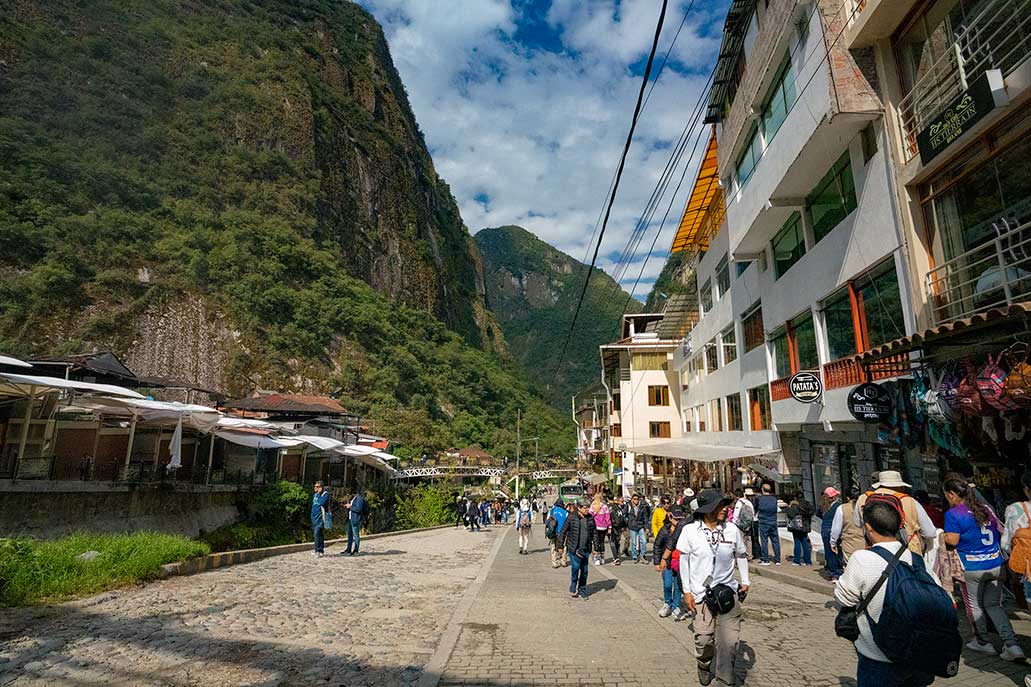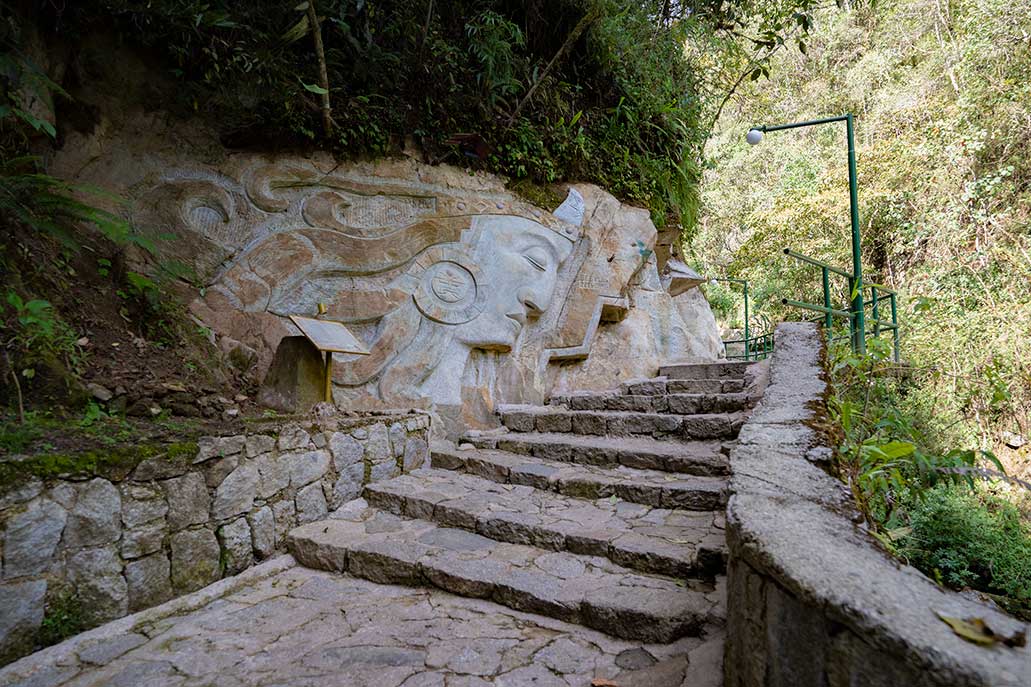Machu Picchu Town or Aguas Calientes: Complete information
This blog as a guide will help us understand what Machu Picchu Pueblo is and how it differs from the Inca construction. This similarity in the names sometimes confuses travelers who think that Machu Picchu is very close to Cusco or believe that they will find themselves just a few steps from the wonder of the world after taking the train. For now, we can mention that Machu Picchu Pueblo is the district that hosts visitors worldwide. In addition, it belongs to the jurisdiction of the province of Urubamba and the region of Cusco. And like every district of Cusco, this beautiful place has other attractions to satisfy the needs of all national and foreign tourists.
Content
What is Machu Picchu Pueblo?
Machu Picchu is a Peruvian district that belongs to the jurisdiction of the Urubamba province and the Cusco region. The nickname “Pueblo” is used to differentiate it from the Inca archaeological site that receives the same name. Unfortunately, cases have been reported of some people confusing the names and thinking that before reaching Machu Picchu there is only one train station, or worse, they believe that the wonder of the world is a few meters away or in Cusco itself. Of course, Cusco is wonderful for all of us Cusqueños. But we have to admit that this name belongs to Machu Picchu, the Inca construction. Now let’s clear up some details to better understand this whole thing.
- Machu Picchu Pueblo (Town) – is the district we have been talking about, it is practically a small modern city that also has an environmental protection certification since you cannot find motorized vehicles that run on gasoline or oil. You can only find buses that run on liquefied gas, considerably reducing CO2 emissions. In addition, it is one of the cities that best organizes its waste since it has recycling and composting points for organic waste that use it as organic fertilizer.
- Machu Picchu (Llaqta) – “Machu Picchu” only or “Machu Picchu Llaqta”, is used to refer to the archaeological site built by the Incas. The term “Llaqta” comes from the Quechua voice used to refer to “city”, understanding city for everything that would make it up, such as streets, and buildings. However, this translation refers to a community that is not exactly dedicated to agriculture. But, Machu Picchu, as in all Inca constructions, has a strong relationship with agricultural spaces. In case we want to use the translation by the linguistic simile to “citadel”, we will find, according to to a dictionary, that this word refers to a fortification or fenced space to avoid attacks. The archaeological site of Machu Picchu does not directly obey these definitions, since it also comes from another cultural horizon. For this reason, the archaeologists in agreement decided to use the term ” Llaqta ” which was probably how the Incas called these agricultural production spaces with the presence of important temples, royal residences, warehouses, and even a housing area.
- And ¿Aguas Calientes? – Aguas Calientes is the nickname that Machu Picchu Pueblo received, as one more attempt by the population, the different travel agencies, and the media to differentiate both places. Currently, the nickname is used more frequently over the true or correct name of the district. For example, in train tickets, sales are made in the direction of the Aguas Calientes train station or only use “Machu Picchu”. This obviously and as we mentioned can cause many mistakes, especially for tourists who do not usually do research before the trip. Emphasize that, from Machu Picchu Pueblo or Aguas Calientes, there is still a stretch of 10 kilometers to reach the archaeological site of Machu Picchu or Llaqta de Machu Picchu.
Where is Machu Picchu Pueblo?
To further clarify all possible confusion, we must establish the coordinates of Machu Picchu Pueblo. Although we have already mentioned some details, such as the case of its jurisdiction and that it is part of the province of Urubamba. This places it north of Cusco and to get there it is mandatory to take the train in case one does not want to do the walking routes, since the last and second option is to reach this place on foot. Only in these two ways can you get to Machu Picchu Pueblo.
Machu Picchu Pueblo is located in the high jungle of Cusco, at an approximate altitude of 2,040 meters above sea level. For this reason, it is difficult to make routes that allow access by bus or car to the place. Although currently, they are working on some projects that achieve this goal. At the moment, it can only be reached by the train lines that were originally intended to connect Cusco with Quillabamba. As a review of the history of Machu Picchu Pueblo, we have that the railway project began in 1901, ten years later the existence of the archaeological remains of Machu Picchu was made known to the world. Later, various workers settled in this area to make their homes. In 1941, Machu Picchu Pueblo became an official district that would belong to the province of Urubamba ever since.
Machu Picchu is the first destination in the world to obtain the Carbon Neutral certification. Putting itself before other destinations and wonders of the world that cannot receive this recognition. This new recognition was announced on September 2, 2021, by the global organization Green Initiative. This event represents a social advance of ecological importance that will serve as an example to other destinations and communities around the world.
Machu Picchu Pueblo or Aguas Calientes today
From its founding to the present, many things have happened in this district. For example, the nomination and later title of Machu Picchu as one of the 7 Wonders of the Modern World or the arrival of dismantled buses to later be assembled and can function as the only means of transport that connect this district with the Llaqta de Machu Picchu. Throughout this period, different constructions were carried out to improve services to both national and foreign tourists. The services that grew exponentially are hotels and restaurants. Both services show a wide variety of offers for all kinds of demands.
Although the restaurants seem to have high prices, the truth is that they present a service according to the price. In other words, it is unlikely that you will leave any restaurant disappointed. In addition, as in any place, the options are multiple. In Machu Picchu Pueblo or Aguas Calientes, you can find good restaurants offering buffet services, where the diner can try the best of Peruvian cuisine. Something similar occurs with hosting services that can be found for all types of audiences, from premium services to small accommodations or camping areas.
Over time and after various events, the Manuel Chávez Ballón Site Museum was opened. This museum collects a lot of information about the archaeological site and how the discovery of this place was made known to the world. You can also find some remains found and how the settlers had decided to leave the place. Another place close to this museum is the butterfly farm and a garden where you can find a large variety of orchids. Another beautiful place that can be visited near this place, quite apart from Machu Picchu, is the Mandor Waterfalls and Gardens, which offers a walk with a connection with nature.
Finally, we can find some other places that are probably better known, such as the train station and the bus station, which is more like a bus stop where people usually queue, but not for long. The departure time of these buses that arrive at the archaeological zone of Machu Picchu, after half an hour of travel, is 15 minutes at most. If there are large numbers of passengers, they will likely leave much faster. Both train and bus tickets can be booked online. An essential place is the thermal baths. These thermal baths are usually frequented by visitors, especially those who made the Inca Trail route of 4 or 2 days. It is also a place that can help relax muscles and some stomach conditions.



